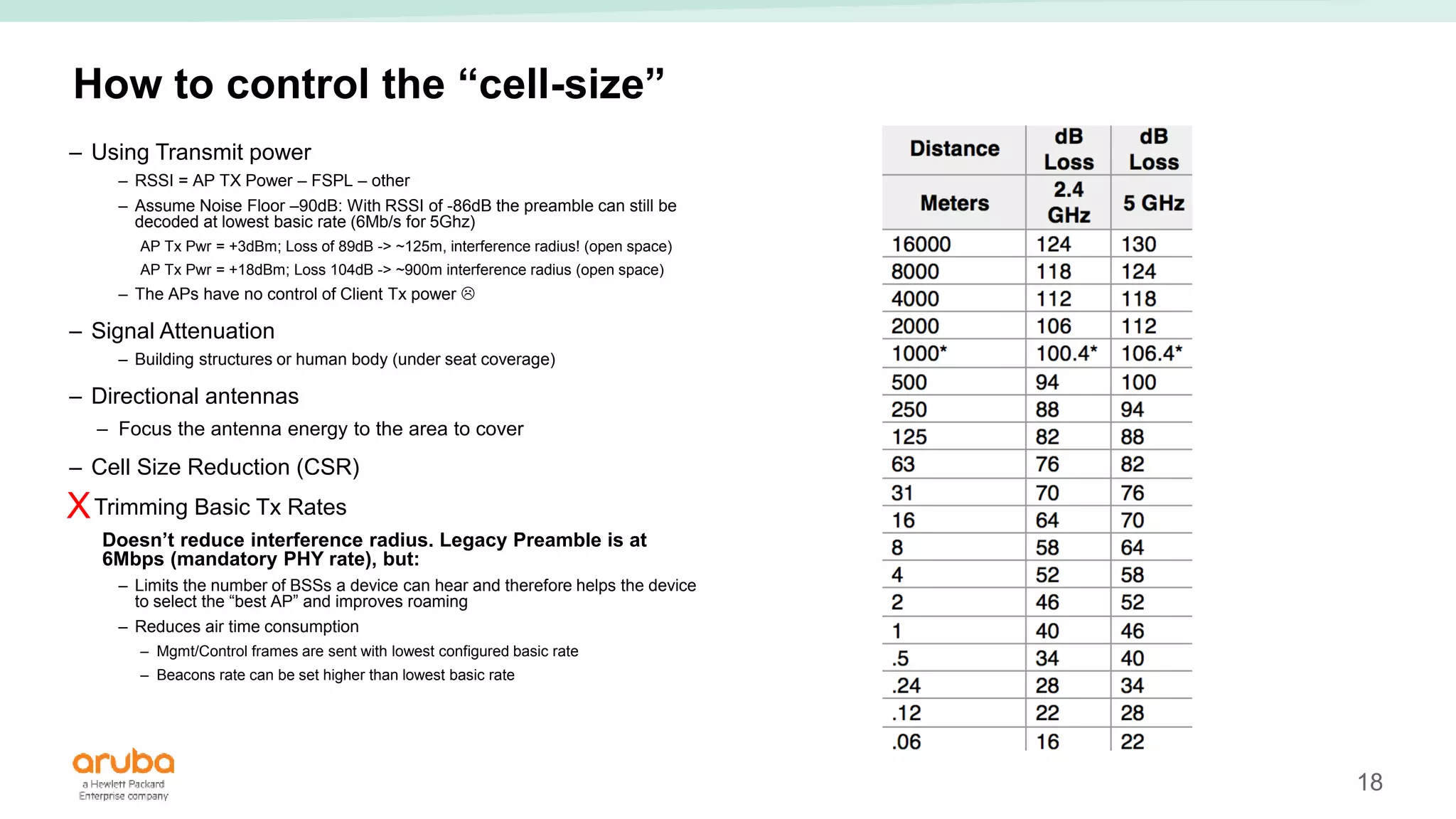The document discusses the challenges and strategies for designing very high density (VHD) WLANs to effectively support large crowds in venues such as stadiums and convention centers. It emphasizes the need for careful channel management, interference control, and optimizing access point (AP) placement to achieve reliable connectivity amidst numerous devices. Key recommendations include determining total capacity, understanding if multiple APs are necessary, and employing best practices for coverage to ensure optimal network performance.
































